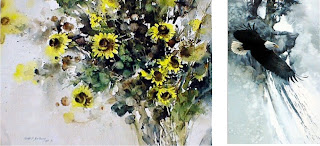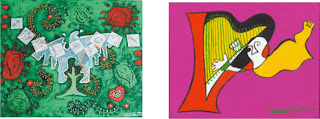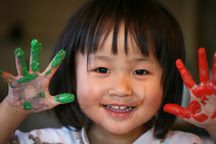There is no doubt that children benefit from learning to use their imaginations in creative pursuits. Creative kids learn how to problem-solve, see new and different ways to do things, and they can apply innovation in all aspects of their lives. Art is synonymous with creativity. Whether children participate in planned art activities or they use their imaginations at home, there are several ways you can help support children’s creative pursuits:
DO – set up a creative cupboard in an area where your child can readily access such art tools as recycled household items (cardboard tubes, fabric scraps, etc), crayons, water-based markers, paints, glue stick, glitter, stamps, construction paper, and so forth. Make sure that the products you supply children are age-appropriate and carry the AP label for non-toxicity.
AVOID – passing out coloring books that limit creativity.
DO – set aside “creativity clothes” for children. This is play apparel that kids can wear in confidence and can take a paint splash without causing distress for the young artist (or parent).
AVOID – criticizing children if they get messy or continually cleaning up after them. Keep in mind that children pick up on the messages they see and hear.
DO – Keep creativity open-ended. This means that children will do one-of-a-kind creations given an array of interesting material and blank paper, boxes, and more.
AVOID – telling children what to do or giving them a model of a finished piece of art to reproduce. This can cause frustration and limits individuality.
DO – Build upon interests! If children enjoy video games, give them index cards or poster board to create their own storyboard with characters and settings they can design. Car enthusiasts can sketch a design for their ultimate auto. Doll lovers can create a design for their own paper dolls. Fashion fans can embellish a pair of jeans with lace and sparkles.
AVOID – making negative judgments about children’s ideas or creations.
DO – Give specific, positive feedback that focuses on the creative process and not the finished product. “I like that bold color. Tell me how you chose that blend? How did you make it? What was your inspiration?”
AVOID – simplistic comments, such as “Isn’t that pretty?” Children enjoy honest compliments that focus on specific accomplishments, such as shape, scale, color, design, theme, etc.
DO – Display children’s artwork. Abrakadoodle uses FrameDoodles to proudly display student creations in its classes for children. Honoring children’s artwork boosts confidence and inspires children to continue with their healthy, creative pursuits.





